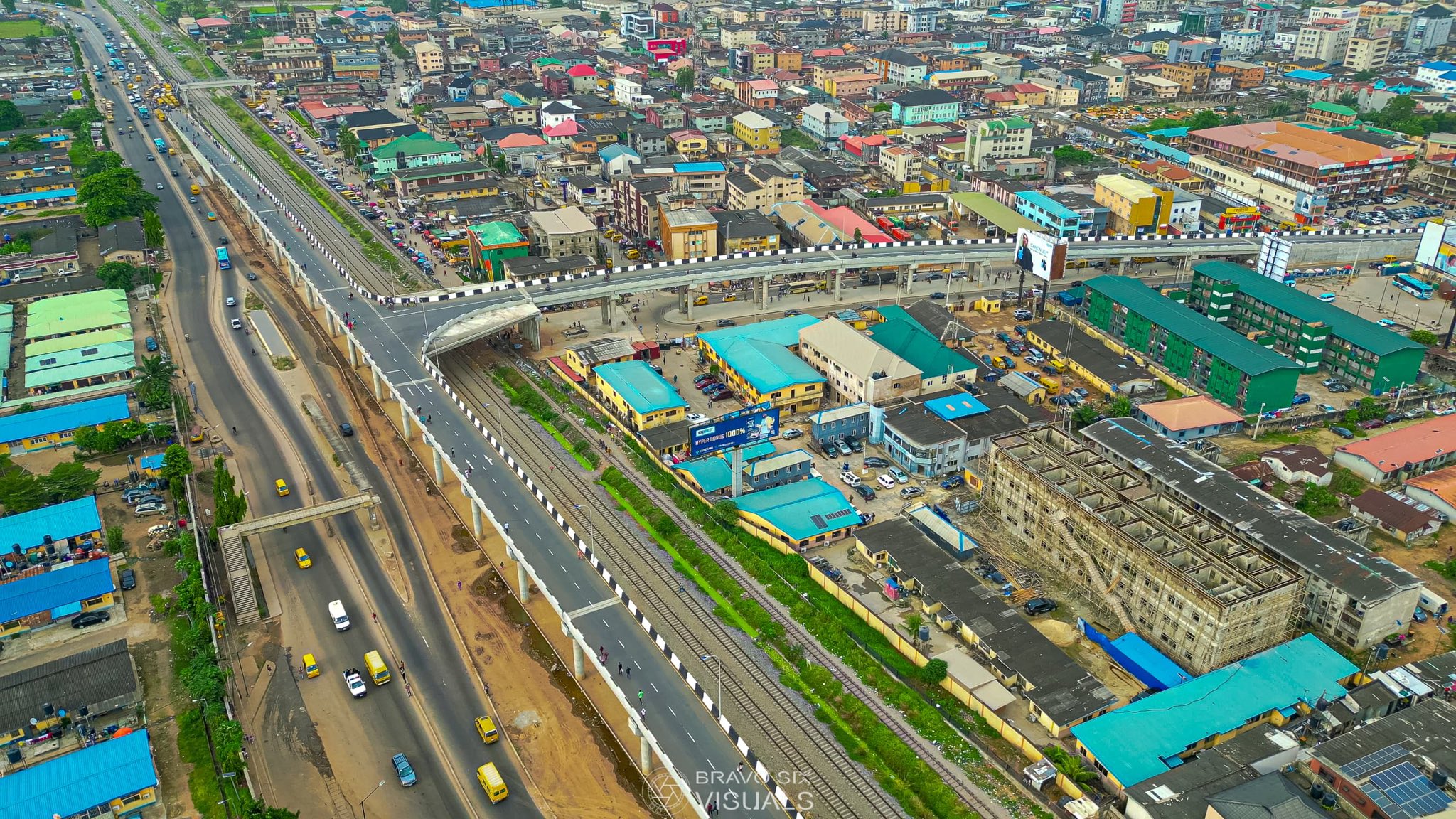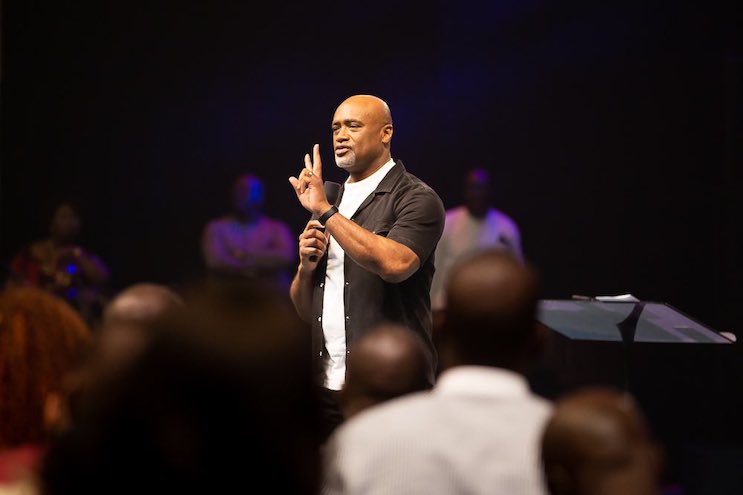
The rumble of the NRC train passing the Ikeja corridor was usually a scramble for safety among commuters. Vehicles screech to a halt, pedestrians erupt to vantage positions, and traders used to the gamble, rush to place their wares away from the coming train. It’s a chaotic level crossing.
And sometimes it’s a narrative of near-misses and silent prayers. Other times lives were lost due to this traffic tango. The BRT staff bus crash in March, crushed by the train, is a brutal reminder.
But finally, a solution arrived. The construction of the Lagos Red Line Rail has paved the way for a strong barricade, a new pedestrian bridge, and an Overpass Bridge that separates vehicular/pedestrian and train traffic. Pedestrians can walk with less fear and vehicles are expected to flow easily.
Speaking about the commissioning of the Overpass Bridge on Monday, the state government noted that it’s “one of five overpasses ceded to Lagos State for construction over the Red Line corridor where the Nigeria Railway Corporation and Red the Nigeria Railway Corporation and Red Line will share tracks.”
The Red Line Rail is a 37 km rail project from Agbado to Marina. The first phase which is nearing completion, will halt at Oyingbo.
The Ikeja overpass, inaugurated on December 19th, 2023, marks the completion of the fourth overpass along the Red Line corridor. Launched in 2020, this project stands as the largest overpass component of the entire rail initiative with a 620-meter length that connects Obafemi Awolowo Way to the Lagos-Abeokuta Express Way.
The challenges ahead
While the overpass promises smoother traffic flow, initial observations by The Record suggest potential challenges. Motorists now pick up passengers at the bridge’s foot (mostly in the evening) and pedestrians returning from Awolowo Way flock to use the bypass.
Persistent pick-up/drop-off activity could lead to bottlenecks at the bridge entrance and exit. This, in turn, would spill over onto Obafemi Awolowo Way and the Lagos-Abeokuta Expressway, potentially negating the entire project’s benefit of reducing congestion.
The authorities must implement clear guidelines and enforce regulations to prevent the overpass from becoming another bottleneck. To address this challenge, authorities could consider implementing designated passenger pick-up/drop-off zones away from the bridge. Clear signage and traffic enforcement would also be needed to deter drivers from stopping on the flyover and pedestrians from using it.
This incident also reinforces the need for comprehensive public awareness campaigns when introducing major infrastructure projects. Educating commuters and drivers about the proper use of the overpass and providing alternative passenger pick-up/drop-off options will be vital for its long-term success.
Again, the bridge represents a significant step towards alleviating traffic woes and maintaining safety. But, proactively addressing potential misuse is important. It’s only by working together that the authorities and the public can ensure this infrastructure project truly delivers on its promise of a smoother, safer traffic flow for all Lagosians.

